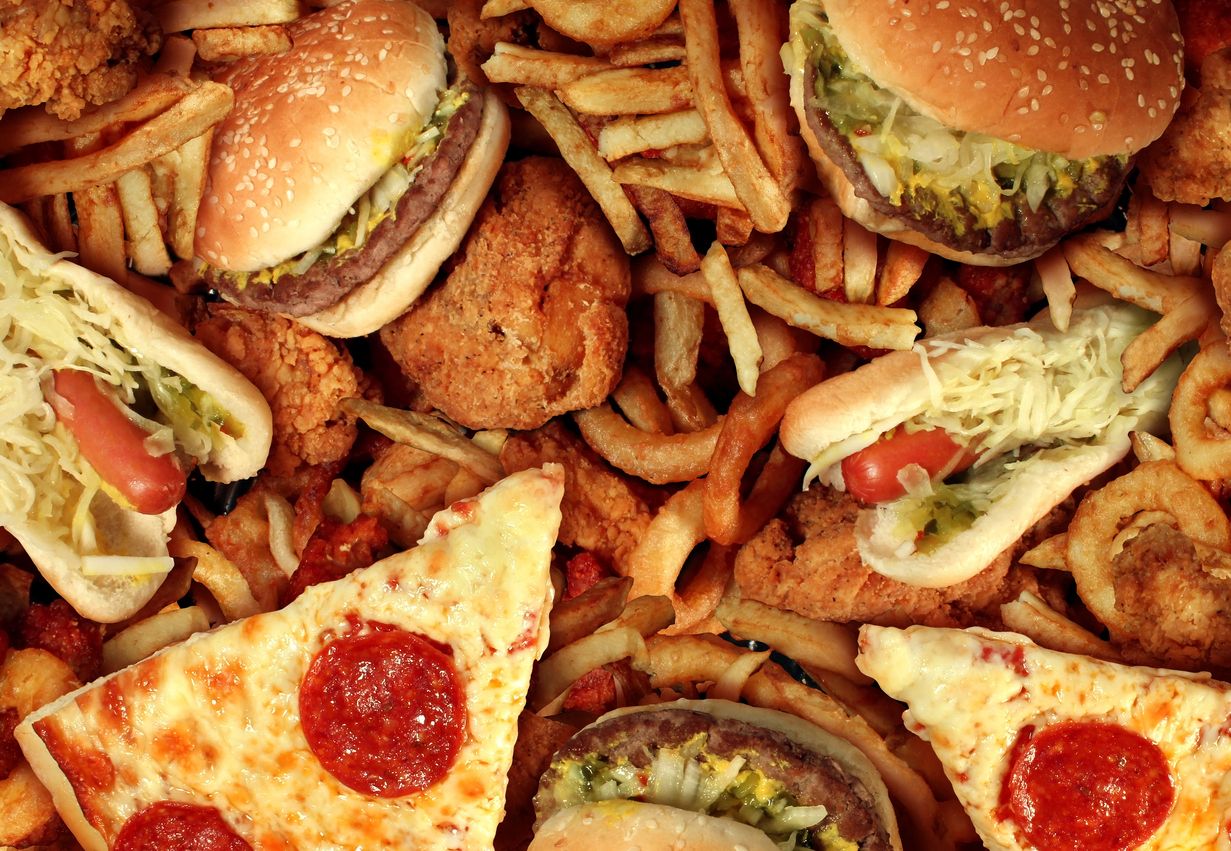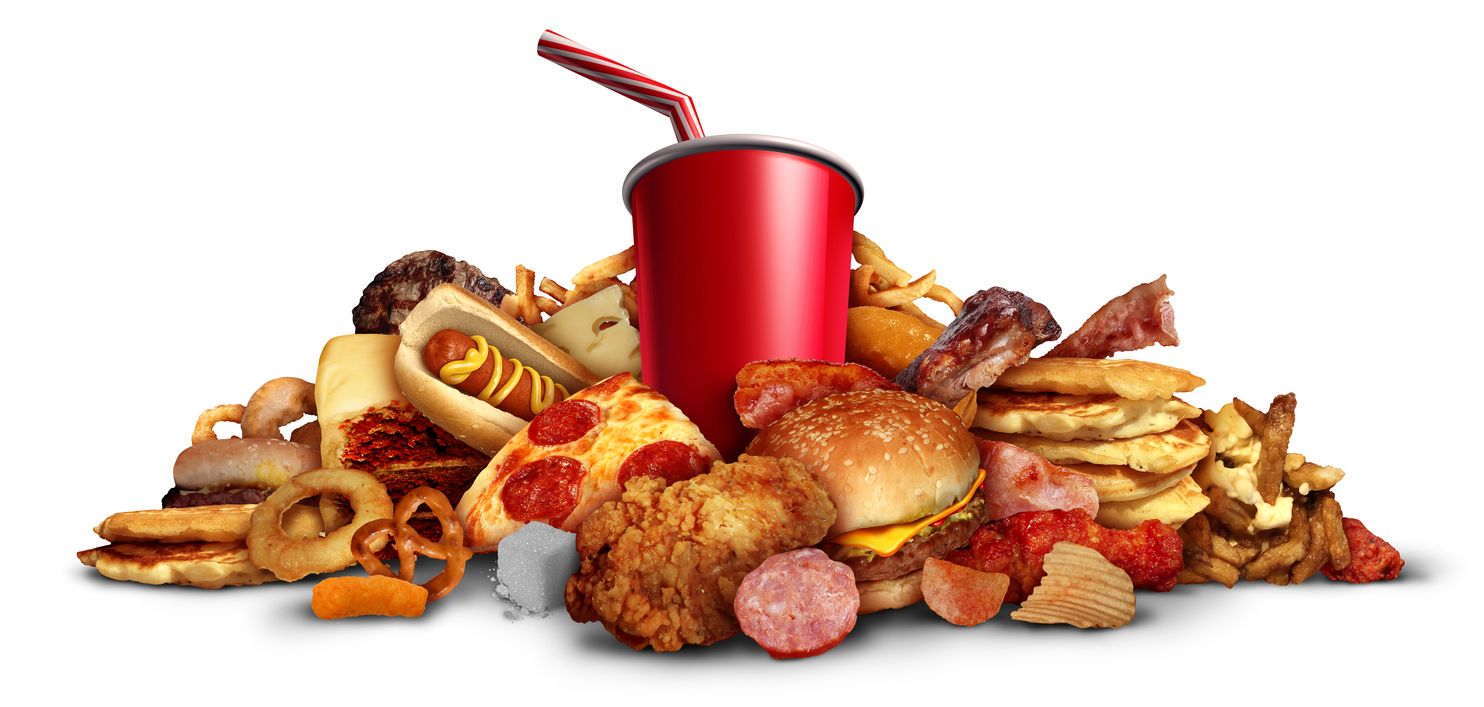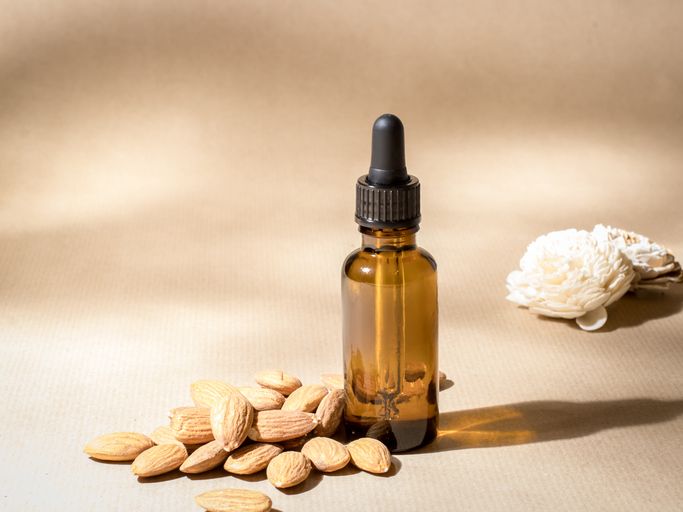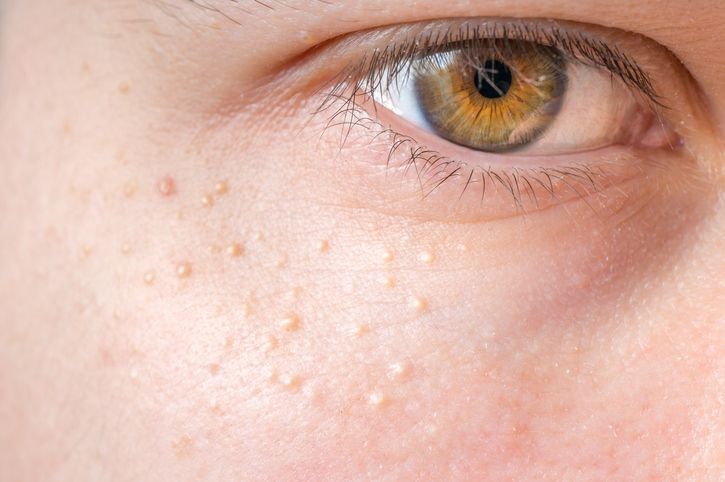- Home
- Trend
- Weight Loss Strategies
- Acne Tips
- Hair Health Information
- Blemish Removal Tips
- Acne Scar Removal Tips
- Muscle Building Techniques
- Intimate Care Tips
- Postpartum Intimate Care
- Eye Bags Wiki
- Tips for Face Slimming
- Secret of Permanent Hair Removal
- Breast Enlargement Tips
- Cure to Snoring
- Marionette Lines
- Skin-Tightening Secrets
Trans fats, also known as trans fatty acids, have been a significant topic of concern in nutrition and health. These fats are associated with various health risks, including an increased likelihood of heart disease. Here, we delve into the sources and impacts of trans fats, and how to avoid them, while highlighting the S6 Body Sculpting Treatment as a complementary method to enhance overall health and body aesthetics.
What Are Trans Fats?

Trans fats are a type of unsaturated fat that can be found in both natural and artificial forms. Their distinct chemical structure makes them unique compared to other fats. Here's a deeper look into the nature, sources, and health implications of trans fats:
Types of Trans Fats
Naturally Occurring Trans Fats
These fats are found in small amounts in certain animal products. They are produced in the stomachs of ruminant animals, such as cows and sheep, as a result of the digestion process.
While they are present in natural foods, the health effects of these trans fats are generally less concerning compared to artificial trans fats. However, excessive consumption of any type of trans fat can still pose health risks.
Artificial Trans Fats
Artificial trans fats, also known as industrial or synthetic trans fats, are created through a process called hydrogenation. This process involves adding hydrogen atoms to liquid vegetable oils to make them more solid. This modification enhances the texture, flavour stability, and shelf life of processed foods.
Trans fats, whether naturally occurring or artificial, play different roles in nutrition and health. Naturally occurring trans fats are found in small amounts in animal products and are less of a concern than their artificial counterparts. Artificial trans fats, created through industrial processes, are commonly found in processed foods and are associated with significant health risks.
Sources of Fats: What Considered as Trans Fat Food?

Naturally occurring trans fats are found in small quantities in animal-based foods, specifically in those derived from ruminant animals. These fats are present due to the unique digestive processes of these animals, which involve microbial fermentation in their stomachs. This process converts certain unsaturated fats into trans fats.
1. Meat
Ruminant Animals: Beef, lamb, and other meats from cows and sheep contain naturally occurring trans fats. The amount of these fats is relatively low compared to artificial trans fats and varies based on the animal's diet and fat composition.
Presence: In meats, trans fats are found in both muscle tissue and fat deposits, but they are generally present in small amounts.
2. Dairy Products
Milk: Whole milk and its derivatives contain trace amounts of naturally occurring trans fats.
Cheese and Butter: These dairy products also have small quantities of trans fats, which result from the same digestive processes in ruminant animals.
These naturally occurring trans fats are present in lower concentrations and are generally considered less harmful than artificial trans fats. Their health effects are still under study, but they are not typically associated with the same level of risk as artificial trans fats.
Artificial Trans Fats
For artificial trans fats, they are created through industrial processes designed to modify the physical properties of vegetable oils. This modification involves the hydrogenation of unsaturated fats, which converts them into a more solid form, making them more stable and extending the shelf life of products.
1. Processed Foods
Baked Goods: Many commercially prepared cakes, cookies, pastries, and other baked items contain artificial trans fats. These fats are used to improve texture, shelf life, and taste.
Snack Foods: Chips, crackers, and other packaged snacks often include artificial trans fats to maintain crispiness and extend freshness.
2. Fried Foods
Fast Foods: Many fast-food items, such as fries, fried chicken, and doughnuts, are cooked in oils containing partially hydrogenated fats.
Other Fried Items: Even some restaurant-style or home-cooked fried foods may contain artificial trans fats if they are prepared with hydrogenated oils.
3. Margarine and Shortening
Margarine: Often used as a butter substitute, margarine can contain high levels of artificial trans fats, although some brands have reformulated their products to reduce or eliminate these fats.
Shortening: Common in baking, shortening provides a desirable texture but can be high in artificial trans fats, depending on the formulation.
Dietary Patterns
• High in Processed and Fried Foods: Diets rich in processed foods, fast foods, and commercially baked goods are often high in artificial trans fats. These diets often contain partially hydrogenated oils (PHOs) that can contribute to increased intake of unhealthy fats and are associated with various health risks, including cardiovascular disease and obesity.
• Moderate Consumption of Meat and Dairy: A diet that includes moderate amounts of meat and dairy may contain naturally occurring trans fats. While these are present in lower quantities, they still contribute to overall fat intake. In contrast to artificial trans fats, naturally occurring trans fats are generally considered less harmful when consumed in moderate amounts.
While naturally occurring trans fats are present in smaller amounts and less concerning, artificial trans fats are prevalent in many processed and fried foods and pose significant health risks.
免費體驗
1 Minute Self-Registration
Date should not be before minimal date
What are the Health Risks Associated with Trans Fats?
The World Health Organization (WHO) recommends that trans fats constitute less than 1% of total daily energy intake to minimise health risks. For an adult consuming a standard 2,000-calorie diet, this translates to no more than 2 grams of trans fats per day. Regular consumption exceeding this threshold is deemed hazardous, significantly increasing the risk of developing cardiovascular diseases.
1. Risk of Obesity
Artificial trans fats are particularly problematic when it comes to obesity and related health issues:
• Caloric Density: Foods high in artificial trans fats are typically calorie-dense and offer little nutritional value. This can lead to excessive calorie intake and subsequent weight gain.
• Metabolic Impact: Artificial trans fats contribute to insulin resistance and inflammation, both of which are linked to increased fat accumulation, particularly around the abdominal area. This can exacerbate the risk of obesity and related metabolic disorders.
2. Increased Risk of Heart Disease
Trans fats have a profound impact on heart health by altering cholesterol levels in the blood. They raise low-density lipoprotein (LDL) cholesterol—commonly referred to as "bad" cholesterol—while simultaneously lowering high-density lipoprotein (HDL) cholesterol, or "good" cholesterol. This imbalance leads to the buildup of fatty deposits in the arteries, significantly increasing the risk of coronary artery disease, stroke, and other cardiovascular issues. Other health concerns include:
• Inflammation: The consumption of trans fats can trigger inflammatory responses in the body. Chronic inflammation is linked to severe health conditions, including cardiovascular disease and type 2 diabetes.
• Weight Gain: Diets high in trans fats are associated with increased body fat, particularly around the abdomen. This type of fat accumulation is a significant risk factor for metabolic syndrome, type 2 diabetes, and other obesity-related health problems.
How Can You Reduce Trans Fats in Your Food?
While it is important to minimise trans fat intake due to its significant health risks, avoiding it entirely might not always be practical or necessary. Instead, focus on reducing trans fats as much as possible by making informed food choices and opting for healthier alternatives. You can start by:
1. Read Nutrition Labels Carefully
To effectively reduce trans fats in your diet, start by scrutinising nutrition labels. The Hong Kong Centre for Food Safety (CFS) has set specific guidelines for trans fat levels in food products. In 2015, the Hong Kong government introduced regulations to limit the trans fat content in prepackaged foods to protect public health. These regulations require that trans fat content be clearly indicated on nutrition labels to help consumers make healthier choices.
Those trans fats that are artificially created, can have significant health implications. When reviewing labels, look for terms like "trans fats" or "partially hydrogenated oils," which indicate the presence of these harmful fats. Keep in mind that even products labelled "0 grams of trans fat" may still contain up to 0.5 grams per serving, which can accumulate over time with frequent consumption.
2. Opt for Healthier Fats
Replacing trans fats with healthier alternatives is another key strategy. Choose unsaturated fats, which are beneficial for heart health and overall wellness. These are found in foods like nuts, seeds, avocados, and olive oil.
Incorporating these fats into your diet not only supports cardiovascular health but also enhances your nutritional profile compared to trans fats.
3. Reduce Consumption of Processed and Fried Foods
Processed and fried foods are often high in trans fats. To lower your intake of these unhealthy fats, limit consumption of packaged snacks, fast foods, and commercially baked goods.
These foods frequently contain high levels of trans fats, so cutting back on them can significantly reduce your overall trans fat intake.
4. Cook Meals at Home
Preparing meals at home gives you greater control over the ingredients used in your cooking. By making dishes from scratch, you can avoid unhealthy fats often found in prepackaged foods and have the flexibility to choose healthier ingredients.
This practice not only helps in reducing trans fats but also supports a more nutritious diet.
Complementary Health Solutions: S6 Body Sculpting Treatment
If you want to take control of your weight loss plan, in addition to reducing trans fat intake, the S6 Body Sculpting Treatment can be an innovative solution for targeting stubborn fat. This treatment can help you achieve better body contouring while you work on your diet plan.
How S6 Works?
Perfect Medical's S6 Body Sculpting Treatment is a revolutionary, non-surgical approach designed to improve body contour by targeting stubborn fat areas. By employing state-of-the-art bio-lasers and vacuum suction, this procedure effectively addresses fat deposits that persist despite diet and exercise, leading to a more sculpted and toned physique
• Bio-Lasers: These advanced lasers penetrate the skin to disrupt and break down fat cells. This process prepares the fat cells for easier elimination by the body.
• Vacuum Suction: After the fat cells are broken down, vacuum suction technology assists in removing them from the targeted area, further promoting fat reduction and enhancing body contour.
• Personalised Plans: Each treatment is specifically designed to match your individual needs and goals, ensuring that the approach aligns with your body’s unique requirements and your aesthetic targets.
Benefits of S6 Body Sculpting Treatment
• Precision Fat Reduction: The S6 treatment focuses on problematic fat areas such as the abdomen, thighs, and hips. Its targeted approach helps achieve noticeable results in areas where traditional methods might fall short.
• Non-Surgical Convenience: Unlike surgical options, S6 Body Sculpting is non-invasive and requires no downtime. This makes it a practical choice for individuals with busy schedules who want effective fat reduction without interrupting their daily activities.
• Enhanced Aesthetic Results: By complementing your existing diet and exercise regimen, the S6 treatment accelerates the achievement of a more sculpted body. It works in synergy with your health efforts to enhance your overall appearance.
• Increased Confidence: Attaining your desired body shape through S6 can significantly boost self-esteem and body satisfaction. The treatment supports your aesthetic goals, helping you feel more confident and satisfied with your appearance.
With S6 Body Sculpting treatment, you can now make informed dietary choices and opt for healthier fats, reduce the intake of harmful trans fats to achieve a healthier, more toned body. Talk to us today to make your first step to the right body sculpting treatment!
免費體驗
1 Minute Self-Registration
Date should not be before minimal date
FAQ

1. What is the risk of heart disease associated with trans fat intake?
Trans fats are linked to an increased risk of heart disease because they raise levels of low-density lipoprotein (LDL) cholesterol while lowering high-density lipoprotein (HDL) cholesterol. This imbalance contributes to the buildup of fatty deposits in the arteries, leading to cardiovascular issues. Reducing trans fat intake is crucial for heart health. Alongside dietary changes, the S6 Body Sculpting Treatment can help by targeting stubborn fat areas, complementing your efforts to improve overall body composition and health.
2. How much trans fat per serving is considered dangerous for health?
The Food and Drug Administration (FDA) advises that trans fat intake should be minimised as much as possible. Many health experts suggest that consuming less than 0.5 grams of trans fat per serving is preferable. Regularly consuming more than this amount can significantly increase health risks. The S6 Body Sculpting Treatment, while not a dietary solution, can assist in reducing fat deposits that may be exacerbated by a poor diet, helping to enhance your overall body contour as you work on your trans fat reduction goals.
3. What are industrially produced trans fats, and how do they affect health?
Industrially produced trans fats are created by hydrogenating vegetable oils, making them more solid and increasing their shelf life. Common in processed foods, these fats can increase the risk of heart disease and obesity. Limiting your intake of foods containing hydrogenated vegetable oils is important. The S6 Body Sculpting Treatment can aid in managing fat in specific areas, which complements your efforts to reduce industrially produced trans fats from your diet.
4. How can I check the amount of trans fats in my food?
To determine the amount of trans fats in food, check the nutrition label for trans fat content and look for partially hydrogenated oils in the ingredient list. Foods labelled as containing 0 grams of trans fat can still have up to 0.5 grams per serving. By reducing trans fat consumption, you can improve your health. The S6 Body Sculpting Treatment can support your body goals by targeting fat that remains despite dietary changes, helping to achieve a more toned physique.
5. How do saturated and trans fats impact overall health, and how can S6 help?
Both saturated and trans fats contribute to an increased risk of cardiovascular diseases by affecting cholesterol levels and promoting fat accumulation. To mitigate these risks, reducing intake of these fats is essential. While focusing on dietary adjustments, the S6 Body Sculpting Treatment can help by targeting and reducing stubborn fat deposits. This treatment complements a healthy diet and exercise routine, enhancing your efforts to improve body composition and overall health.








